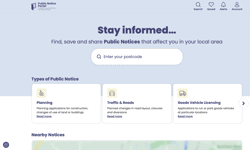eReaders are already here, and within five years they are going to turn the entire publishing industry on its head. Sounds ominous? Maybe, but perhaps they offer newspapers and magazines a last chance to hit the reset button after the lunacy of the Great Internet Content Giveaway, and to establish new paid-for content models? But, inevitably, there will be winners and losers, based on which businesses are prepared and which aren’t…
The end of paper has been heralded all too often over the past 25 years, but each prediction has fallen flat on its face. Over the last decade, whilst newspaper and magazine publishers have been scrambling for success on the web, the underlying activity of sawing down trees, inking them and distributing the resulting physical product for sale via newsstands and subscription has remained unchanged.
The result has been a slow-motion car crash; waves of new internet technologies and upstarts have redefined media and the dissemination of information whilst simultaneously undermining copy sales and stealing away advertisers. Blogs, Gumtree, Monster, Adwords, YouTube, Facebook, Twitter… the list goes on. But newspapers and magazines plod on basically unchanged – albeit with declining circulations, fewer ads and static content that appeals to fewer and fewer people.
But before we all go and find a bridge to throw ourselves off, I believe that salvation is in sight, in the form of eReaders. Now before I go any further, let me qualify that sentence. Salvation will come only to those publishers who are able to harness the new technologies effectively, and it will arrive too late for many.
An eReader future
But first let’s dream of what the world might look like in the eReader future…
John is dashing out the door to catch his train to work. As usual, he picks up his eReader on his way out the door, which wirelessly downloads his favourite daily ‘paper’ overnight, as well as all his personal and trade magazines as they are published, and the latest from his favourite blogs and tweets. John loves the sleek design, A4 colour touch-screen, and the fact that he can fold it or roll it up. He responds to the editor’s daily front-page poll (“Should we pay for the 2018 England World Cup’s £65 billion cost over-run by a 70% upper-rate tax, or by privatising the NHS?”), with his vote instantly updating the results on the page. After reading some real-time reader comments to the lead story and watching the accompanying video footage, he enjoys a quote on the leader page which he finger-highlights, saving it to his favourites folder and simultaneously re-tweeting it. After turning to the embedded local news pages, he reads a good review of Terminator 11, and clicks on an ad for the 8pm performance at his local cinema to instantly book tickets via one-click purchase. The event updates his calendar. As he flicks through the pages, a record is being kept of how long he (a single 28 year old male living in B14 3EJ earning £45k as a marketing manager) spends on each page, which will be used to update ABC-certified rate-cards and to determine journalist bonuses. He reviews a reader-offer but doesn’t have time to complete his order. But he knows that he’ll get an automatic update on his way home asking why he abandoned, and that if he spends another £65 on reader-offers then next year’s subscription will be free.
OK, I’m not saying that all of this is going to come true, but I do believe that a substantial portion will, and much much else besides. So how far away is the reality of today’s eReader devices against this scenario?
Kindle
Most of the headlines are being captured by Amazon, which has enjoyed a major success with its Kindle 2 device. Launched in February in the US only, reported sales of 300,000 devices in the first three months represent an impressive $100m of hardware (it’s a hefty $359). Even more mouth-watering is Jeff Bezos’ recent statement that eBooks now represent 35% of US sales of print titles where both are available. This would suggest an extraordinary run-rate approaching $1 billion annual eBook sales. You can also purchase subscriptions on the Kindle, and the Wall Street Journal disclosed 15,000 sales at $9.99/month in the first three months. Last month’s (again, US only) launch of a magazine-sized Kindle DX, including tie-ins with the New York Times and three leading textbook publishers, is now causing a stir in the wider publishing world beyond books.
eInk
What’s so special about the Kindle then? As with most dedicated eReaders, it uses eInk technology. If you haven’t experienced an eInk display, it’s wholly different to an LCD screen, truly matching the contrast and resolution of ink on paper. Just as important, it only requires energy when the display changes (ie page-turning), so battery life is massively extended. The Kindle 2 is also wireless, so owners can download book purchases via 3G in 60 seconds. Kindle subscriptions automatically download new editions overnight. Amazon already has 300,000 Kindle book titles, with bestsellers priced at $9.99.
The critical downsides of the Kindle are that it’s black-and-white, it’s not touch-screen, and availability outside the US still hasn’t been announced (but expected early next year). Whilst the new Kindle DX is sized to handle textbooks and magazines, it still shares these shortcomings. So you don’t need me to tell you that we’re not yet on the verge of our industry’s “iPod moment”. Also, worryingly for us, Amazon retains a whopping 70% of eBook revenue – compared to Apple’s 30% App Store share.
Beyond the Kindle are plenty of other eReader devices. Most of these are effectively also-ran’s, but a few are worth noting:
* Sony is the other established eReader player, with its PRS-700 (also US only) and older PRS-505 (which only recently arrived on these shores). The PRS-700 is touch-screen, but it isn’t wireless so purchases must be made on your computer and then transferred via USB.
* Interead, funded by UK entrepreneur Neil Jones, recently launched its Cool-er Reader in the US and UK/Europe with a lower price tag of £189 and lightweight iPod-like design. Although it’s neither touch-screen nor wireless, Cool-er believes that price-point is critical to this market.
* Plastic Logic, a joint US/UK venture, is currently trialling its own magazine-sized device for launch early in 2010, which will be both wireless and touch-screen. As the name implies, the hardware is much more durable than traditional silicon screens. They are specifically targeting business users who will be able to flip between Word, pdf, and eBook documents applying annotations and notes.
* Fujitsu’s FLEPia launched in Japan in April 2009. With a full-colour A4 touch-screen display and wireless, it would appear to have it all. However, with page-turning refreshes taking 1.8 seconds and a $1015 price tag, it seems destined to be a pathfinder rather than a blockbuster.
* Apple’s ? This is a big question. Having overturned the music industry, it’s a fair bet that Apple won’t sit back and let Amazon dominate the publishing sector. Rumours abound of a magazine-sized device launching before the year is out, but nothing has been formally announced. Having said that, the iPhone itself is an eReader device with 30 million users, supported by a range of apps such as Eucalyptus, which for £5.99 gives you all 20,000 Project Gutenberg titles.
What I think is interesting is that if you put together the best features of these listed devices, we’ve already got the device which is going to (literally) re-write the rules.
Now it’s obviously not as simple as simply pooling features, but my best guess is that our iPod moment will come towards the end of 2011. By the end of 2012, we’ll be out of the early-adopter phase and prices will drop as volumes increase. By this stage, the book publishing industry will have already been substantially re-invented, with 25%-and-growing proportion of eBook format sales. Major change for newspapers and magazines will only kick in from this point, as paper sales migrate to eReader subscriptions, driving up unit print and distribution costs in an accelerating spiral, and also bringing incremental sales from a new generation of eReader subscribers.
So what, if anything, should newspaper and magazine publishers be doing today? We know how hard it is to overhaul large organisations, so three years isn’t really that far off.
1. My first piece of advice would be to hold your nerve with respect to the internet, and to pull back from giving so much free content away (unless of course you’re in the minority who have managed to make this approach profitable already). You could argue that the mad dash for traffic that started ten years ago has worsened today’s mess, by breeding an expectation amongst a generation of consumers that information on the web comes for free. This damage to our brands has to be unwound starting now if we are to convince consumers to go back to paying for our content on eReaders. It looks like Rupert Murdoch has initiated an industry-wide move in this direction, with plans to introduce paid-content models on all his titles including Times and Sun Online within a year – “the current days of the internet will soon be over”. I think the internet battle is already lost for newspapers and generalist magazines – there are too many alternative free news services available now. However, I would argue that in the past, when new technology has supplied a new and improved delivery medium for an existing service, consumers have proved willing to pay a premium. Think of mobile call tariffs over land-lines, or CD prices over records and cassettes. eReaders represent an equivalent new delivery medium, so the opportunity exists to increase paid circulation, whilst simultaneously shrinking web content and costs.
Magazines, particularly niche titles, have been more resilient to the internet than newspapers, as the pleasure in reading them is more closely tied to the advantages of paper. The next generation of eReaders should therefore be a boon to the sector, bringing the advantages of the web (interactive, transactional, real-time) to the traditional paper experience. But the real opportunity is for magazines to win back a younger generation of readers from time spent online with social media, etc. And that will require an editorial revolution which for most magazines, unlike newspapers or B2B information specialists, just hasn’t happened yet.
2. My second piece of advice would be to educate your staff about eReaders and to encourage them to plan for the opportunities and challenges that their growth will represent; in editorial, design, advertising, circulation, IT. All functions will be affected, and in each there is an opportunity to innovate in order to steal a march on competitors. And bring this thinking to bear in decisions which have a long term impact, such as re-organisations, recruitment criteria and IT system purchases. You want to ensure that your entire workforce is as multimedia ready as possible, because the growth of eReaders will fully reverse the separation of staff working on print and electronic products which has grown up, as well as accelerating trends such as the convergence of video and print content, or the integration of circulation and CMS applications.
3. The third area of preparation is in terms of content licensing. Should you be offering your content through the major aggregators, or should you be approaching the leading eReader suppliers or eBook stores directly to do deals? What sort of revenue share should you be looking for? Can you expect to control pricing or not? There are no fixed answers to these questions, but you need to be exploring them sooner rather than later. Breadth of content is critical to their success, so eReader players are keen to secure publisher deals. This creates an early-mover advantage which will greatly diminish if you find yourself negotiating with the one or two dominant providers in a couple of years’ time.
Having failed to lead innovation during the internet revolution, the publishing sector is paying a heavy price in the form of lost audiences and advertisers. My hope is that we are more prepared for the eReader revolution.










